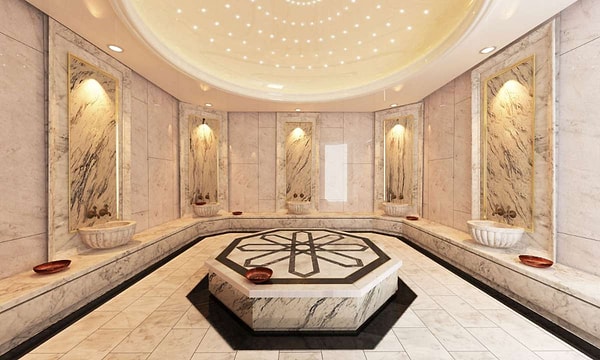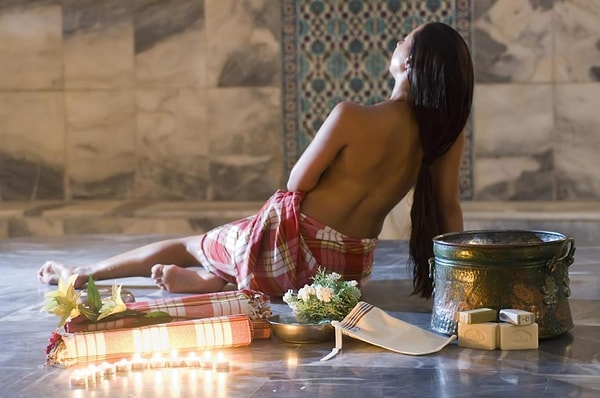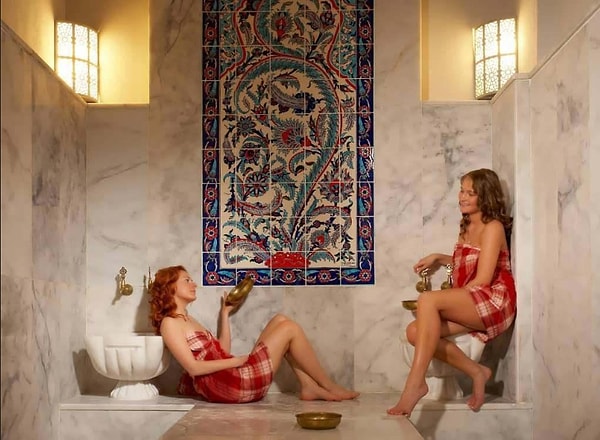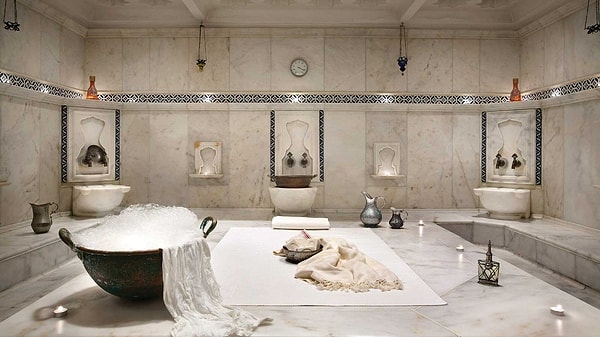Turkish Baths (Hamams): History, Benefits, and Etiquette
Turkish baths, known as hamams, have been an integral part of Turkish culture for centuries. These traditional bathhouses offer more than just a place to cleanse the body; they provide a unique and rejuvenating experience for both locals and visitors alike. Steeped in history, hamams combine elements of ancient Roman bathing rituals and traditional Ottoman customs. In this article, we will explore the rich history of Turkish baths, delve into their numerous health benefits, and guide you through the proper etiquette to fully immerse yourself in this ancient bathing tradition.
I. History of Turkish Baths

The origins of Turkish baths can be traced back to the Roman Empire, where communal bathing was a social and cultural practice. When the Romans established Byzantium, which later became Constantinople and eventually Istanbul, they brought their bathing traditions with them. Over time, these traditions merged with local customs, resulting in the development of the uniquely Turkish hamam.
During the Ottoman Empire, hamams played a significant role in daily life. They were not only places for personal hygiene but also served as social gathering spots where people from all walks of life would come together. Hamams were also built as a symbol of wealth and status, with grand architectural designs and elaborate decorations.
II. The Benefits of Turkish Baths

Cleansing and Relaxation: The primary purpose of a Turkish bath is to cleanse the body and promote relaxation. The combination of hot steam, exfoliation, and massage helps to remove impurities from the skin, leaving it refreshed and revitalized. The steam also opens up the pores, allowing for better absorption of moisturizers and other skin treatments.
Detoxification: The heat and steam in a hamam induce sweating, which aids in the detoxification process. Sweating helps to eliminate toxins from the body, promoting overall health and well-being.
Improved Circulation: The hot steam and massage in a Turkish bath stimulate blood circulation, which can help alleviate muscle tension, reduce stress, and improve overall cardiovascular health.
Respiratory Health: The steam in a hamam can be beneficial for respiratory conditions such as asthma and sinus congestion. Inhaling the moist air can help to open up the airways and relieve respiratory discomfort.
Stress Relief: The tranquil ambiance and therapeutic treatments in a hamam create a serene environment that promotes relaxation and stress relief. The combination of steam, warm water, and massage can help to release tension, both physically and mentally.
III. Etiquette in a Turkish Bath

Gender Separation: In traditional Turkish baths, men and women have separate bathing areas or designated times for bathing. However, in some modern hamams, there are designated areas or times for mixed-gender bathing. It's important to respect and adhere to the rules and customs of the particular hamam you visit.
Modesty: While in the hamam, it is customary to wear a traditional pestemal, a large towel or wrap, to maintain modesty. It is also common to be fully naked during the bathing and massage process. However, if you feel more comfortable, you can wear a swimsuit or undergarments.
Hygiene: Before entering the hamam, it is essential to wash thoroughly to ensure cleanliness. Use the provided soap and water to cleanse your body before entering the bathing area.
Relaxation and Pace: Take your time and embrace the leisurely pace of the hamam experience. Allow yourself to unwind, enjoy the steam, and indulge in the relaxation rituals. Take breaks between the hot steam sessions to cool down and hydrate.
Massage and Exfoliation: Traditional hamams offer massage and exfoliation services. If you wish to partake in these services, communicate your preferences and desired level of pressure to the bath attendant. They will guide you through the process and ensure your comfort.
Respect for Others: In a communal setting, it's important to respect the privacy and personal space of others. Keep conversations at a low volume and refrain from any disruptive behavior. Maintain a respectful and considerate attitude towards fellow bathers.
Relaxation Areas: Most hamams have designated relaxation areas where you can unwind after your bathing experience. Take advantage of these spaces to rest, sip on some tea, and fully embrace the tranquil atmosphere.
IV. Famous Turkish Baths

Çemberlitaş Hamamı (Istanbul): Located in the heart of Istanbul's historic Sultanahmet district, Çemberlitaş Hamamı is one of the city's oldest and most renowned hamams. Its grand architecture and exquisite marble interiors offer an authentic and luxurious bathing experience.
Çemberlitaş Hamamı (Istanbul): Located in the heart of Istanbul's historic Sultanahmet district, Çemberlitaş Hamamı is one of the city's oldest and most renowned hamams. Its grand architecture and exquisite marble interiors offer an authentic and luxurious bathing experience.
Ayasofya Hürrem Sultan Hamamı (Istanbul): Situated near the Hagia Sophia, this hamam was commissioned by the Ottoman Sultan Süleyman the Magnificent for his wife, Hürrem Sultan. It features stunning Ottoman architecture and offers a range of bathing and massage services.
Kılıç Ali Paşa Hamamı (Istanbul): Designed by the renowned Ottoman architect Mimar Sinan, this hamam is located in the vibrant Tophane neighborhood. Its striking domed structure and elegant interiors create a serene and opulent ambiance.
Cağaloğlu Hamamı (Istanbul): Built in 1741, Cağaloğlu Hamamı is one of the most historic hamams in Istanbul. Its impressive dome and traditional Turkish bath rituals make it a popular choice for locals and tourists alike.
Turkish baths, with their rich history, numerous health benefits, and unique cultural significance, offer a truly immersive and rejuvenating experience.
From the cleansing and relaxation rituals to the tranquil ambiance and social aspects, hamams provide a glimpse into the traditional customs and wellness practices of Turkey. By understanding the history, benefits, and proper etiquette of Turkish baths, you can fully appreciate and enjoy this ancient bathing tradition during your visit to Turkey. So, indulge in the steam, immerse yourself in the soothing environment, and allow the therapeutic benefits of the hamam to revitalize your body and soul.
Have you ever been to a hamam before? Let's meet in the comments!
Keşfet ile ziyaret ettiğin tüm kategorileri tek akışta gör!


Send Comment